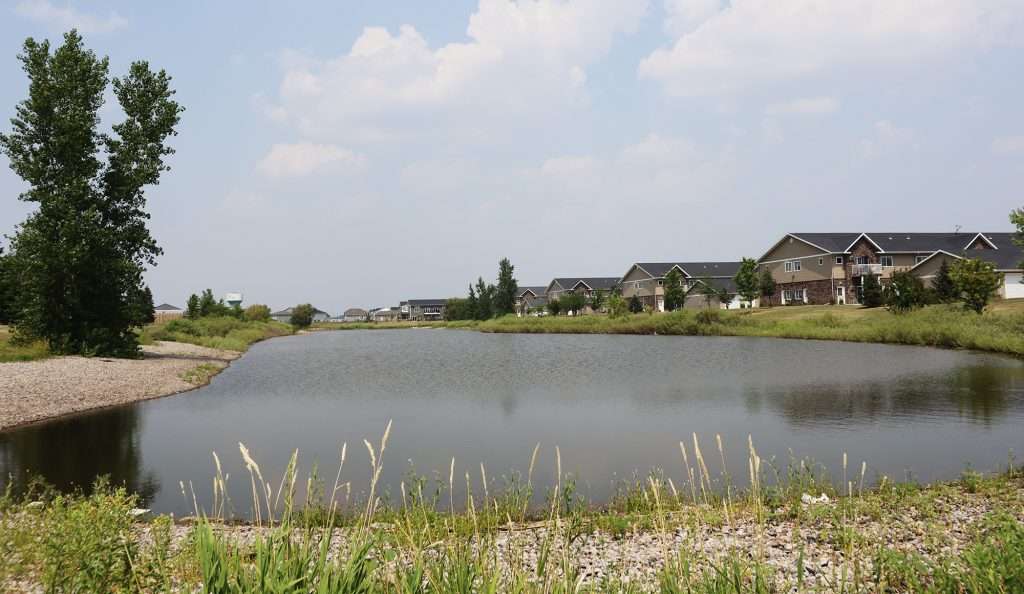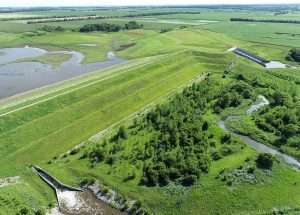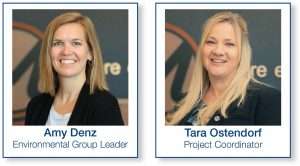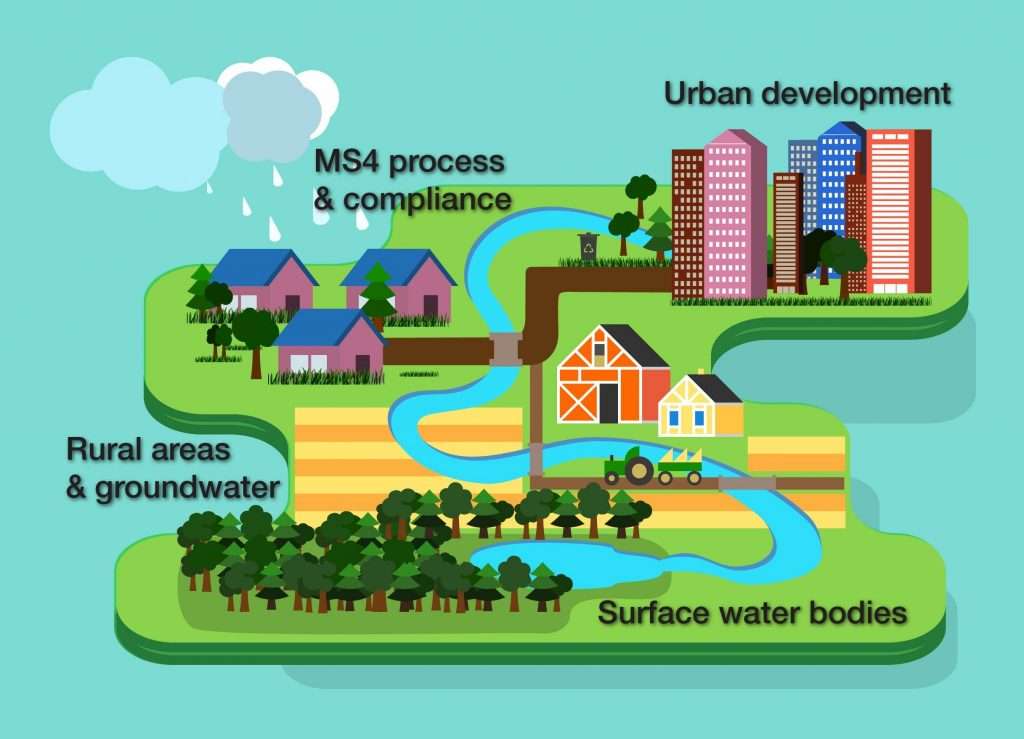
Stormwater, Ecosystems & You, Part 1: Overview
The following is the first in a series of articles highlighting stormwater runoff, its effect on ecosystems and how engineering and regulations mitigate its impacts.
 The science behind how stormwater runoff originates is just how it sounds: when it rains (or snow melts), the water begins to flow across the land surface or builds up if it has nowhere else to go. This process is typically more evident in urban areas with more impervious surfaces and buildings in a compact area. When it cannot soak into the ground naturally, the stormwater may run through a drainage system specifically designed to handle it or it will simply run over the urban landscape until it finds a place to settle. All along its journey it picks up pollutants and debris or it creates flooding conditions as it spreads outward into a less urbanized landscape. And therein lies the issue.
The science behind how stormwater runoff originates is just how it sounds: when it rains (or snow melts), the water begins to flow across the land surface or builds up if it has nowhere else to go. This process is typically more evident in urban areas with more impervious surfaces and buildings in a compact area. When it cannot soak into the ground naturally, the stormwater may run through a drainage system specifically designed to handle it or it will simply run over the urban landscape until it finds a place to settle. All along its journey it picks up pollutants and debris or it creates flooding conditions as it spreads outward into a less urbanized landscape. And therein lies the issue.
Although stormwater runoff has negative implications, the stormwater itself is not the catalyst of the environmental challenges associated with it. It is its surroundings, of natural or human origin, that cause the issues that ultimately affect all of us. The potential direct and indirect effects include:
- Human health impacts
- Flooding
- Erosion
- Financial impacts
- Harm to recreation and wildlife
While we cannot completely prevent stormwater runoff, we can minimize its impact on our urban and rural communities. As individuals, we can lessen our own contributions to stormwater pollution, such as limiting the use of yard chemicals, picking up pet waste, avoiding overwatering the lawn, preventing spilling of oil, fuel or other mechanical fluids, and even refraining from washing our cars in the driveway.
 On a larger scale, governing entities do their part to manage and mitigate stormwater issues from construction activities, flooding and agricultural runoff by setting standards and implementing laws and regulations. Engineers do their part by becoming or consulting experts on those regulations and standards, and designing infrastructure and projects while accounting for each project’s unique geography and surrounding environment.
On a larger scale, governing entities do their part to manage and mitigate stormwater issues from construction activities, flooding and agricultural runoff by setting standards and implementing laws and regulations. Engineers do their part by becoming or consulting experts on those regulations and standards, and designing infrastructure and projects while accounting for each project’s unique geography and surrounding environment.
Every project an engineer designs should take stormwater into consideration and address potential effects the project may create, whether it is a road reconstruction project, watershed improvements or water tower construction. Public entities and private citizens require sustainable stormwater solutions and compliance guidance for a variety of circumstances and scenarios.
 Moore Engineering’s Environmental Group Leader Amy Denz and Environmental Project Coordinator Tara Ostendorf work on the front end of our project designs to ensure stormwater and other environmental issues are addressed before they become negative factors in a project. They are also experts in regulations and their specialties relative to stormwater include:
Moore Engineering’s Environmental Group Leader Amy Denz and Environmental Project Coordinator Tara Ostendorf work on the front end of our project designs to ensure stormwater and other environmental issues are addressed before they become negative factors in a project. They are also experts in regulations and their specialties relative to stormwater include:
- Regulatory Process and Strategy
- Regulatory Compliance & Permits
- Best Management Practice (BMP) Design & Implementation
- Environmental Review (EAW, EA, EIS)
- Site Constraints/Fatal Flaws Analysis
- Community Planning
- Public Engagement
- Funding Research and Assistance
In the big picture, stormwater affects so much more than its immediate environment. The remaining installments of this series of articles will follow the path of stormwater as it progresses across a varied landscape from an urban environment to various rural settings. The next four articles will focus on stormwater as it relates to:
- Urban development
- MS4 process and compliance
- Rural areas and ground water
- Surface water bodies (rivers/streams/lakes)
See also: Stormwater, Ecosystems & You, Part 2: Urban Development
Stormwater, Ecosystems & You, Part 3: MS4 Compliance
Stormwater, Ecosystems & You, Part 4: Groundwater and the Rural Landscape
